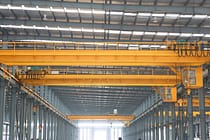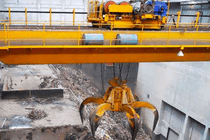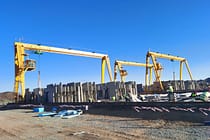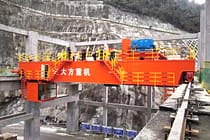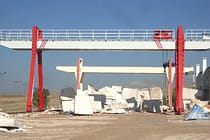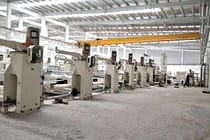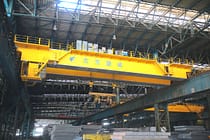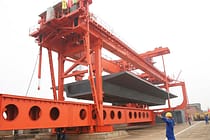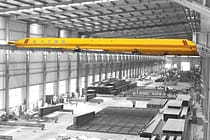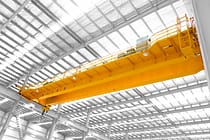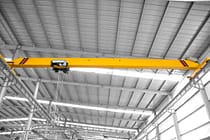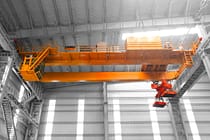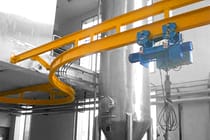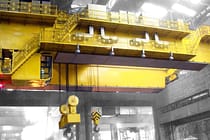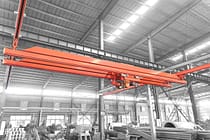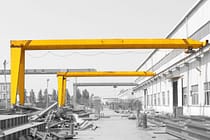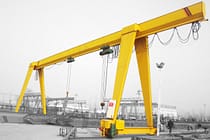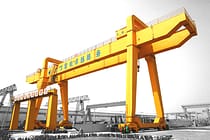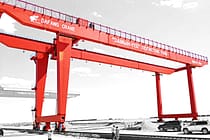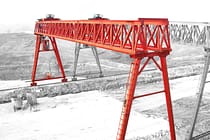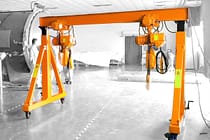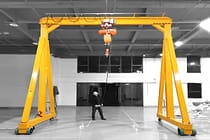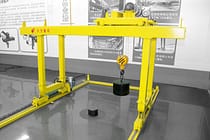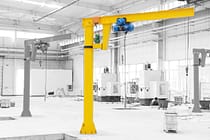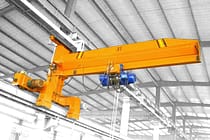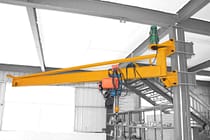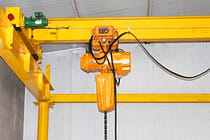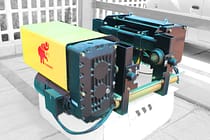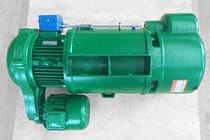Warehouse Overhead Cranes: Streamlining Logistics And Storage
Warehouse overhead cranes are essential for logistics and storage operations. These cranes are designed to lift and move heavy materials, containers, and equipment within a warehouse or manufacturing facility. In this article, we will discuss the benefits of using overhead cranes in warehousing and the types of overhead crane used in a warehouse.
Types Of Warehouse Overhead Crane
There are different types of overhead cranes that can be used in a warehouse setting, each with its own advantages and disadvantages.
Single Girder VS Double Girder Overhead Crane
One of the main differences between single girder and double-girder overhead cranes is the number of beams used to support the crane’s hoist. Single girder cranes have one beam spanning the gap between two end trucks, while double girder cranes have two parallel beams connected by a trolley. The choice between single-girder and double girder cranes will depend on the weight of the load being lifted and the height it needs to be raised.
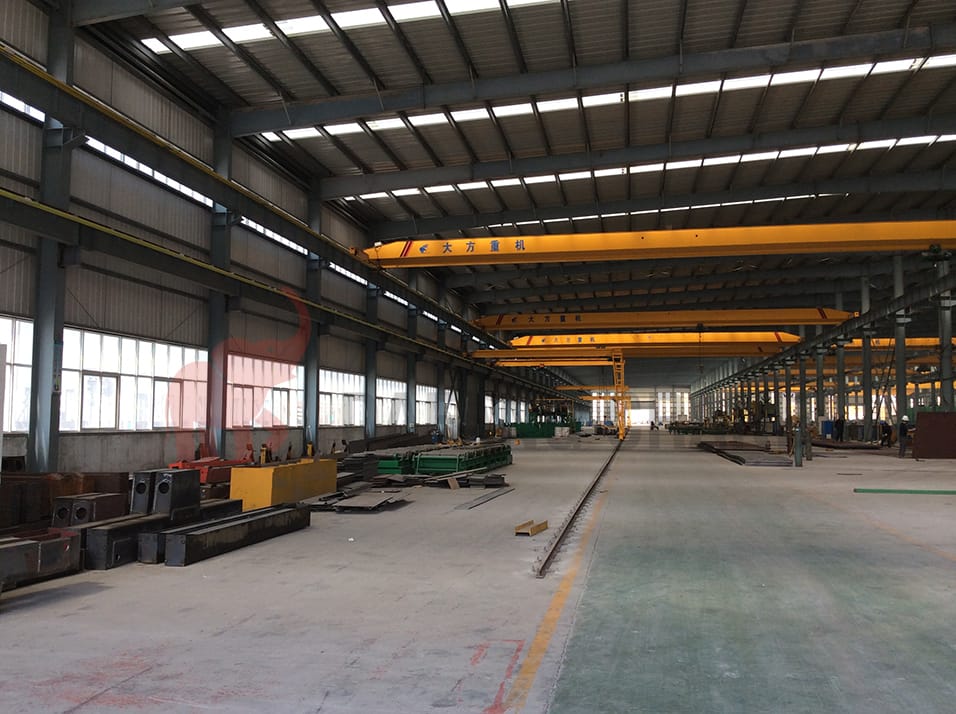
Single girder cranes are typically less expensive than double girder cranes and require less maintenance. They are also more compact and better suited for smaller workspaces. However, they are limited in terms of the weight they can lift and the height to which they can raise the load. For heavier loads and higher lifting heights, a double girder crane may be necessary. Double girder cranes offer greater stability and lifting capacity, making them ideal for heavy-duty lifting operations. However, they are more expensive and require more maintenance than single girder cranes.
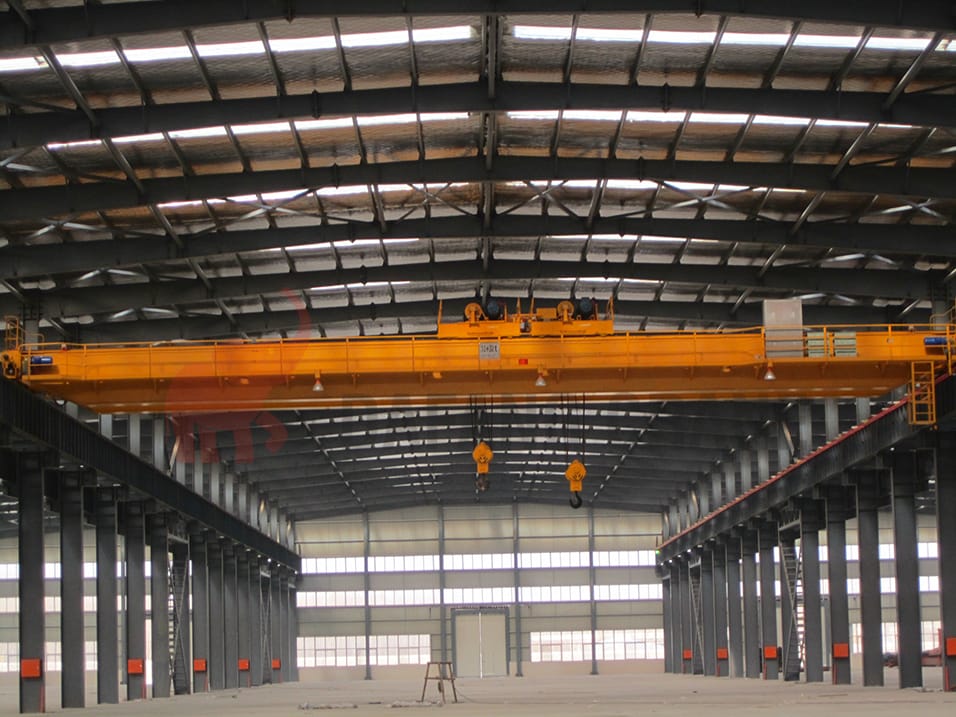
Top Running VS Under Running Overhead Crane
Another important factor to consider when choosing an overhead crane for a warehouse is whether to opt for a top running or under running crane. Top-running cranes have wheels that run on rails mounted on top of the runway beams, while under running cranes have wheels that run on rails mounted underneath the runway beams.
Top running cranes are ideal for heavy-duty lifting operations and can lift heavier loads than under running cranes. They are also more durable and require less maintenance than under-running cranes. However, they require more headroom than under running cranes, making them less suitable for low-ceilinged workspaces.
Under running cranes are more cost-effective and better suited for smaller workspaces. They do not require as much headroom as top running cranes and can be used in areas with limited space. However, they cannot lift as much weight as top running cranes and may require more maintenance.
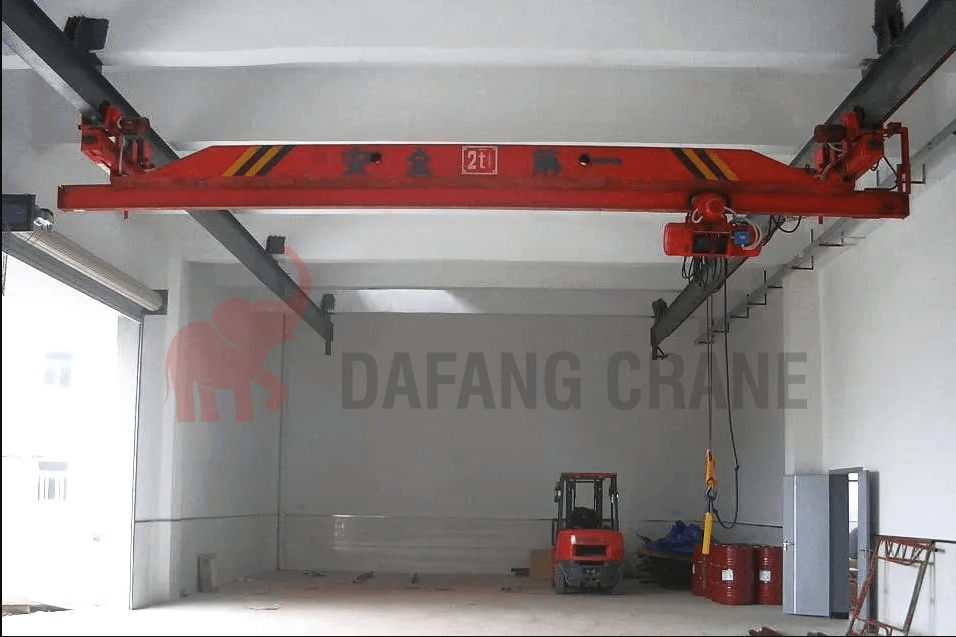
Advantages And Disadvantages Of Each Type
When selecting a bridge crane for a warehouse or industrial environment, the advantages and disadvantages of each crane type need to be considered comprehensively. Single girder cranes are cost-effective and require less maintenance, but they have lower lifting capacities than double girder cranes. Double girder cranes offer greater stability and higher lifting capacities, but they are more expensive and require more maintenance.
Top running cranes are ideal for heavy-duty lifting operations, but they require more headroom than under running cranes. Under-running cranes are more cost-effective and better suited for smaller workspaces, they cannot lift as much weight as top-running cranes.
Benefits Of Overhead Cranes Used In Warehouses
- Increased Efficiency And Productivity:Overhead cranes are designed to lift and transport heavy loads, making material handling faster and more efficient. This feature enables workers to complete tasks quickly and with minimal physical exertion, which ultimately leads to increased productivity. With overhead cranes, workers can concentrate on other tasks while the crane handles the heavy lifting, resulting in a more efficient workflow.
- Reduced Labor Costs:The use of overhead cranes in warehouses significantly reduces labor costs. With overhead cranes, fewer workers are required to handle heavy loads manually, which reduces the risk of worker fatigue and injuries. This feature helps to save on labor costs and also minimizes the need for overtime payments, which can be expensive for businesses.
- Better Space Utilization And Flexibility:Overhead cranes enable better space utilization and flexibility in warehouses. They can lift and transport goods to hard-to-reach areas and high levels, allowing for better use of vertical space. This feature helps to optimize floor space, enabling the storage of more goods in the same area. Additionally, overhead cranes are flexible, allowing for quick and easy relocation to other areas in the warehouse.
Considerations For Choosing The Right Warehouse Overhead Crane
Choosing the right overhead crane for your business requires careful consideration of several factors, including load capacity and lifting height, span and clearance requirements, environment and operating conditions, as well as budget and maintenance costs.
- Load Capacity And Lifting Height: The load capacity of an overhead crane refers to its maximum weight-bearing capacity. This is determined by the size and strength of the crane’s components such as the bridge, runway, trolley, and hoist. When choosing an overhead crane, it is important to consider the heaviest load that will be lifted and any additional weight from rigging or attachments. The lifting height is another important factor to consider. The higher the lifting height, the lower the maximum load capacity becomes. It is essential to choose a crane with a load capacity that matches the weight of the materials you need to lift and the required lifting height.
- Span And Clearance Requirements: Span refers to the distance between the runway beams of the bridge crane. Clearance refers to the vertical space available in the building where the crane will be installed. These factors determine the type and size of the crane needed for your facility. A wider span may require a double girder crane with a higher load capacity, while a lower clearance may necessitate a crane with a shorter lifting height. It is important to identify the specific span and clearance requirements of your operation before selecting an overhead crane.
- Environment And Operating Conditions: The operating environment and conditions of your facility can significantly impact the performance and life span of your overhead crane. Factors like temperature, humidity, dust levels, and corrosive materials can damage the crane’s components and affect its efficiency. It is important to choose a crane that is designed to withstand the specific operating conditions of your facility. It is also crucial to consider the frequency of crane use and the expected workload when selecting an overhead crane.
- Budget And Maintenance Costs: The initial cost of an overhead crane is one consideration, but it is essential to factor in ongoing maintenance and repair costs. Choosing a reliable and durable crane can help minimize maintenance costs and downtime, ultimately providing a more cost-effective solution in the long run. It is important to select a crane that fits within your budget while still meeting your operational needs.
Warehouse overhead cranes are essential tools for logistics and storage operations. They provide increased efficiency, and improved safety, and can help maximize storage space. The versatility and cost-effectiveness of these cranes make them an ideal choice for any warehouse or manufacturing facility.
Send Your Inquiry
- Email: sales@hndfcrane.com
- WhatsApp: +86-191 3738 6654
- Tel: +86-373-581 8299
- Fax: +86-373-215 7000
- Add: Changnao Industrial District, Xinxiang City, Henan Province, China
